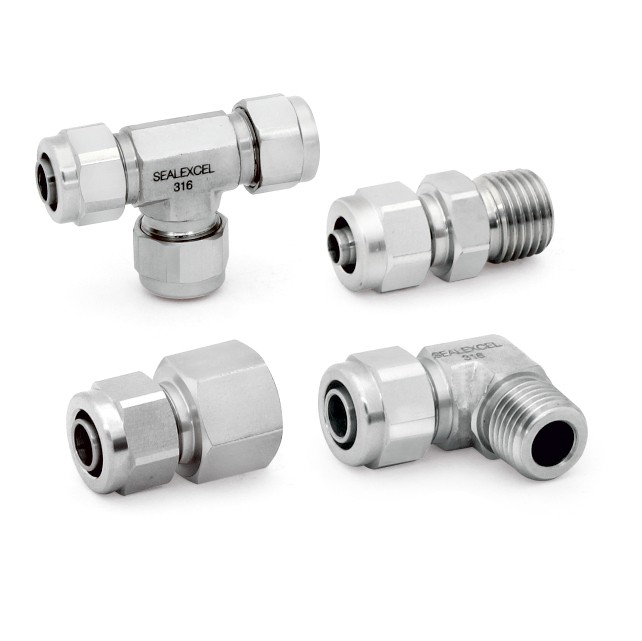The Use of Stainless Steel Tube And Fitting in Multiple Industries
May 28, 2021How to Choose the Right Tube Fittings Manufacturer
September 1, 2021Compression tube fittings compress one of the fitting’s components into another, typically tubing, to form a watertight seal between two separate lines. The compression fitting has been used less often in the water treatment industry with the advent of quick-connect type fittings, but it is still an excellent fitting that can bear high pressure and provide a dependable, tight seal. A compression fitting comprises three parts: a sleeve, a nut, and the fitting body itself. When the nut compresses the sleeve into the relevant body, it functions as a seal.
Compression tube fittings are available in a range of materials. The most common material for a compression fitting is brass, but you must ensure that you get lead-free brass fittings since it is prohibited to use any fitting that contains lead. They are often constructed of plastic and stainless steel. The amount of pressure or temperature that your fitting can bear will vary depending on the material of your fitting.
Compression fittings are used to join tubes by compressing a gasket, ring, or ferrule. Tightening a nut onto the fitting over the tubing and ferrule compresses and secures the tubing within. Standard stainless steel tubes and fittings do not need equipment to assemble, making them ideal for fast and easy installation. However, they cannot sustain high pressures and lack the flexibility of soldered fittings, making them less useful in systems subjected to vibration, heat cycling, and other dynamic stresses. They are also only available in a few materials and are ideally suited for metal-on-metal connections.
Types of compression tube fittings
Bite-Type
Bite-type fittings are compression fittings with a pointed ferrule that bites the tube and creates the seal when squeezed. Like conventional compressive fittings, Bite-type fittings are easy to install but offer a more robust, higher-pressure connection.
Mechanical Grip Fittings
Mechanical grip fittings are made up of two ferrules. The rear ferrule holds the tubing while pushing up against the front ferrule, spring-loading it, and creating a seal between the tubing and fitting body. These fittings can be disassembled and rebuilt many times without causing damage to the components or tubing. They are mechanically vibration-resistant
Flare Fittings
Flare fittings are made up of a body and a flared or coned end. Special flaring tools are required to attach the tube to fit within the flared end, resulting in a tight seal. Flare fittings can withstand pressures that are more significant and a wider variety of operating conditions than compression fittings.
Flange fittings are ports with flat surfaces perpendicular to the tube to which they are connected. Clamps, bolts, and welding are used to connect and seal these surfaces.
Push-To-Connect Fittings
Push-to-connect fittings, also known as fast couplers, are the feature ends intended to receive tubing by pushing it into the end. These fittings usually detach through some collar retraction. Quick connections are helpful for system parts that need frequent separation and reconnecting.
Compression tube fittings come in various configurations because they must be adaptable to a variety of situations. Some of the more apparent fittings include straights, which are placed when the connection is straight up to the next pipe or hose, and elbows, where the connection is perpendicular to the pipe and hose.



